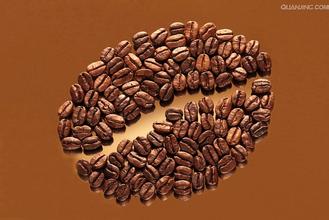Ethiopian honey kiss coffee flavor description processing method production characteristics varieties taste introduction
Ethiopian boutique coffee beans
Because of its extremely high altitude, small bean shape, but extremely high sweetness (usually high altitude beans with high acidity), it doesn't taste like Aricha.
Beloya's perfumed fruit (perfumed
Effusive (fruit), but if you remove the wet powder from Nekisse, you will smell a very strong and complex smell of spices (spicy)
Notes), this change can be felt in drinking slowly, so the change of Nekisse in cooling is its strength.
Another feature is the change in the number of days of exhaust, as far as light baking is concerned, from 3 to 5 days of sweetness, to 7 days of 10 days of juice, to more than 12 days of sour wine, in addition, the change in deep baking is no less than that of shallow baking, which is understandably different from the description of Nekisse in different places.
Nekisse is the third 90-compliant bean found by Ninety Plus after Aricha and Beloya in 2010. And on Coffee
Review scored the highest score of 96 for the year.
1. Stable production (reducing human factors)
two。 It is enough to reduce the cost by 12-14g powder (because the extraction is more sufficient, the amount of powder can be reduced)
3. The large flow flushing method can speed up the production speed.
4. If you have enough extraction, it tastes better.
Lily Coffee single Coffee brewing vessel-introduction to Chemex Pot
I drink coffee because of chemex.
Chemex hand Pot: invented by Dr. Schlumbohm in 1941, it has a history of 70 years, has won a number of international awards, and has entered the collection of classics in the Modern Museum of New York. This hourglass-shaped hand punching pot made of heat-resistant glass has a very exquisite craft design. Small flaws in hand brewing techniques can be avoided and high-quality coffee can be made even if it is not carefully brewed. In addition, Chemex hand flushing pot can also be used as red wine sober, juice cup and so on.

Important Notice :
前街咖啡 FrontStreet Coffee has moved to new addredd:
FrontStreet Coffee Address: 315,Donghua East Road,GuangZhou
Tel:020 38364473
- Prev

Introduction to the characteristics of the flavor and taste of sun Yega Xuefei and aricha
Sun-treated Erika G1 has more lively citrus citric acid, aromas of apricot blossoms, exploding nuts of walnuts, and subtle aromas of cinnamon, cloves, rosemary and other spices. taste with a very good honey brown sugar sweet, very soft and attractive, as if the whole body soaked in the sea in early autumn, by the cool sea
- Next

Introduction to the characteristics of grinding degree treatment method for Burundian AA coffee flavor varieties in producing areas
Characteristics of Burundi Coffee: Burundi (Burundian) has the most diverse and successful coffee industry in the world, and has its own characteristics. Burundian coffee is fragrant and has excellent acidity. Flavor: mellow taste, rich aroma, excellent acidity suggested baking method: medium to deep baking ★★: good tail rich and long-lasting through the introduction of the Bilishi
Related
- Detailed explanation of Jadeite planting Land in Panamanian Jadeite Manor introduction to the grading system of Jadeite competitive bidding, Red bid, Green bid and Rose Summer
- Story of Coffee planting in Brenka region of Costa Rica Stonehenge Manor anaerobic heavy honey treatment of flavor mouth
- What's on the barrel of Blue Mountain Coffee beans?
- Can American coffee also pull flowers? How to use hot American style to pull out a good-looking pattern?
- Can you make a cold extract with coffee beans? What is the right proportion for cold-extracted coffee formula?
- Indonesian PWN Gold Mandrine Coffee Origin Features Flavor How to Chong? Mandolin coffee is American.
- A brief introduction to the flavor characteristics of Brazilian yellow bourbon coffee beans
- What is the effect of different water quality on the flavor of cold-extracted coffee? What kind of water is best for brewing coffee?
- Why do you think of Rose Summer whenever you mention Panamanian coffee?
- Introduction to the characteristics of authentic blue mountain coffee bean producing areas? What is the CIB Coffee Authority in Jamaica?

